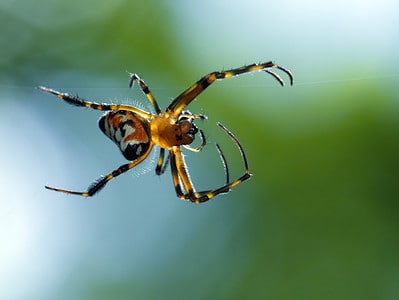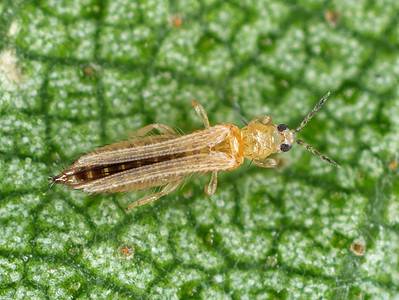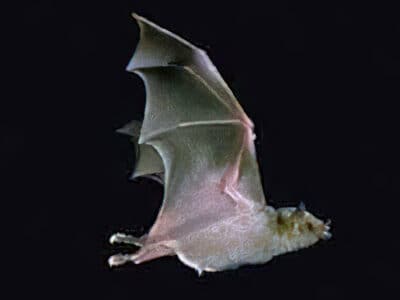Towhee
Pipilo erythrophthalmus
Most towhee species are non-migratory. However, some are partial migrators depending on their location.
Advertisement
Towhee Scientific Classification
- Kingdom
- Animalia
- Phylum
- Chordata
- Class
- Aves
- Order
- Passeriformes
- Family
- Passerellidae
- Genus
- Pipilo
- Scientific Name
- Pipilo erythrophthalmus
Read our Complete Guide to Classification of Animals.
Towhee Conservation Status
Towhee Facts
- Prey
- Snakes , lizards, insects , worms, snails
- Group Behavior
- Solitary
- Fun Fact
- Most towhee species are non-migratory. However, some are partial migrators depending on their location.
- Biggest Threat
- Invasive species
- Most Distinctive Feature
- Red eyes
- Temperament
- Territorial
- Wingspan
- 9 to 10 inches
- Incubation Period
- 12 to 13 days
- Age Of Independence
- 30 days
- Habitat
- Woodlands, forests, and urban cities
- Predators
- Red-shouldered hawk , brown-headed cowbird , western scrub-jay , raccoons , rats
- Diet
- Omnivore
- Lifestyle
- Diurnal
- Common Name
- Towhee
- Origin
- North America
- Number Of Species
- 9
- Location
- North America
- Average Clutch Size
- -1
- Nesting Location
- Ground
View all of the Towhee images!
Towhees are a group of songbirds containing nine different species. They belong to the family Passerellidae, also referred to as the New World sparrows. Many people struggle pronouncing their name, but it is quite simple, Tow-Hee.
Their most distinctive feature is their red eyes. All species of this family reside in North America. The biggest species is the Eastern towhee (Pipilo erythrophthalmus)
Towhee Species
There are nine species of Towhees, but the most popular are:
Collared Towhee
Collared towhees have bright patterns and inhabit the highlands of south-central Mexico. They are generally found in flower banks, overgrown fields, pine forests, and brushy understories.
They are often seen feeding along the edges of fields and on quiet roadsides in the late spring. These birds are typically quiet, but do sing from low trees or bushes.
They have rusty caps, brightly striped heads, and bold white throats, which contrasts with the wide black collar around their necks. Although they are mostly quiet, their songs and calls are quite loud; unlike a similar species, the chestnut-capped brush finch.
Spotted Towhee
The spotted towhee is a large, striking bird that inhabits sun-filled thickets in western regions of North America. Males have black backs with white spotting and stripes, while females are a grayish-brown color.
Their rufous flanks are a rusty color to match the dry leaves they spend most of their days in, making them hard to see when in leaf litter. So, the best time to view these birds is in the spring when they sing from the top of bushes and shrubs.
Eastern Towhee
Eastern towhees are the largest of the genus, and they inhabit the eastern regions of North America, as their name suggests. They are black and reddish-brown in color, with striking white marks covering their bodies.
These birds prefer to rummage through the undergrowth and make a considerable racquet when doing so. In addition, they have chewink calls that are surprisingly loud for their body size.
Canyon Towhee
Canyon towhee is considered a large sparrow because they belong to the family of New World sparrows. They have brown plumage and look a lot like their cousins, the California towhee; however, they do not share the same habitat.
These birds are ground-dwelling and found in various habitats like desert grasslands, brushy areas, and suburban gardens. Their diet consists of seeds and several types of invertebrates.
Where to Find the Towhee
These birds inhabit various ecosystems like woodlands, forests, and urban cities. They can live as high as 6,500 ft, although they prefer lower altitudes because of the warmth.
All species live in North America and build their nests in bushes or on the ground under shrubs. However, they spend most of their days on the ground, rummaging through the foliage for food, and really thrive in areas with thick undergrowth.
In addition, they occupy low-hanging branches where they feed on fruits and insects. Although there are several species of these birds, their habitat range is vast and diverse.
For example, the eastern towhee (the most common) prefers the edges of fields, woodlands, and forests.
Nests
Because there is more than one specie, their nests differ. For example, the spotted towhees build their nests on the ground or just above it in shrubs. However, females generally build the nests, which takes around 5 days to complete.
Size and Appearance
The size and appearance of these birds vary between species. The spotted towhee has a black back and throat. The males have white spots on their wings and a white belly. Females are similar except for their grayish-brown plumage.
Eastern towhees are the largest species of the genus and have a wingspan of 9 to 10 inches. Their sides are rusty, and they have dark tails with white bellies. Males have black backs, but females have brown plumage.
Eastern towhees measure between 6 to 9 inches long. However, the Albert towhees are 8.3 to 9.8 inches in length, with a wingspan of 10.4 to 11.6 inches.
Smaller species like the green-tailed towhee only measure 7.5 inches long, and the spotted towhee is similar in size to a Robin.
The eastern towhee can weigh anywhere from 0.1 to 1.1 pounds. However, the average weight of towhees is around 0.9 pounds.
Migration Pattern and Timing
Most species in this genus are non-migratory. However, some are partial migrators depending on their location. For example, the northern populations of eastern towhees do migrate, while the southern populations stay put all year round. In addition, another species that does not migrate is the California towhee.
Behavior
These birds are generally solitary; they even have signs for when they want to be left alone. For example, males will flick their tails and droop their wings to let others know they are not welcome. Males are also fiercely territorial and defend their homes way more than is needed.
Reproduction and Lifespan
Eastern towhees’ mating season spans from spring to summer; however, this can change depending on their location. Females take 5 days to build a nest and lay about 2 to 5 eggs. The eggs incubate for around 12 to 13 days.
Once their eggs hatch, both parents will feed the offspring for about 30 days. However, spotted towhee parents only stay for 10 to 12 days.
Spotted towhees build their nests on the ground or just above it in shrubs. Females produce at least two broods per season and lay around 3 to 5 eggs. Their eggs are creamy white or grayish in color and appear elongated.
Lifespan
Lifespans differ between species, but the eastern towhee can live as long as 12 years, while spotted towhees can live up to 11 years. On average most towhee species live around 10 years.
Diet
These birds are omnivores, typically eating fruit, plants, and animals. Their diets generally consist of:
Predators, Threats, and Conservation Status
The towhee has many predators, which include:
- Red-shouldered hawk
- Brown-headed cowbird
- Western scrub-jay
- Raccoons
- Rats
While there is no official conservation status for the entire genus, many towhee species are listed as Least Concern on IUCN’s Redlist. However, there are some species that are in danger, like the sirocco towhee (Pipilo socorroensis), which is listed as Endangered. These birds have a declining population due to invasive species out-competing them, weak genetics, and disease.
Population
There is no official record for the towhees population size. However, most species are stable.
Up Next
View all 133 animals that start with TTowhee FAQs (Frequently Asked Questions)
What does it mean when you see a towhee?
The eastern towhee has a strong spiritual meaning for many cultures. The bird is often seen as a guide or a protector
How do you pronounce towhees?
Their names are pronounced just like it’s spelled,tow-hee.
What is the lifespan of a towhee bird?
Towhees can live up to 10 years old.
Thank you for reading! Have some feedback for us? Contact the AZ Animals editorial team.
Sources
- Animals.Net, Available here: https://animals.net/towhee/
- Kidadl, Available here: https://kidadl.com/facts/animals/towhee-facts
- Wikipedia, Available here: https://en.wikipedia.org/wiki/Towhee

















